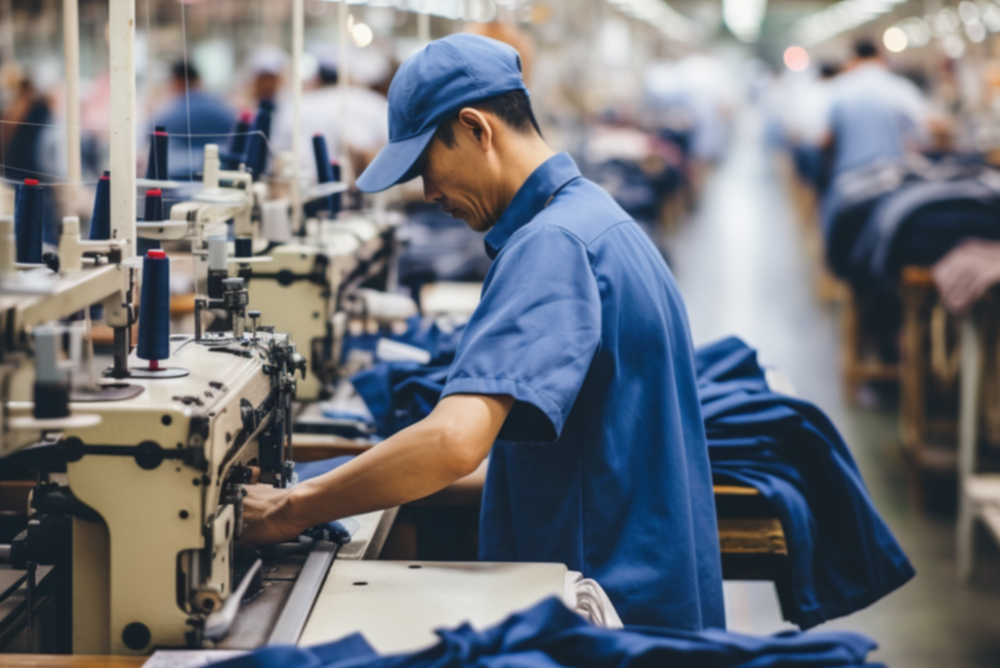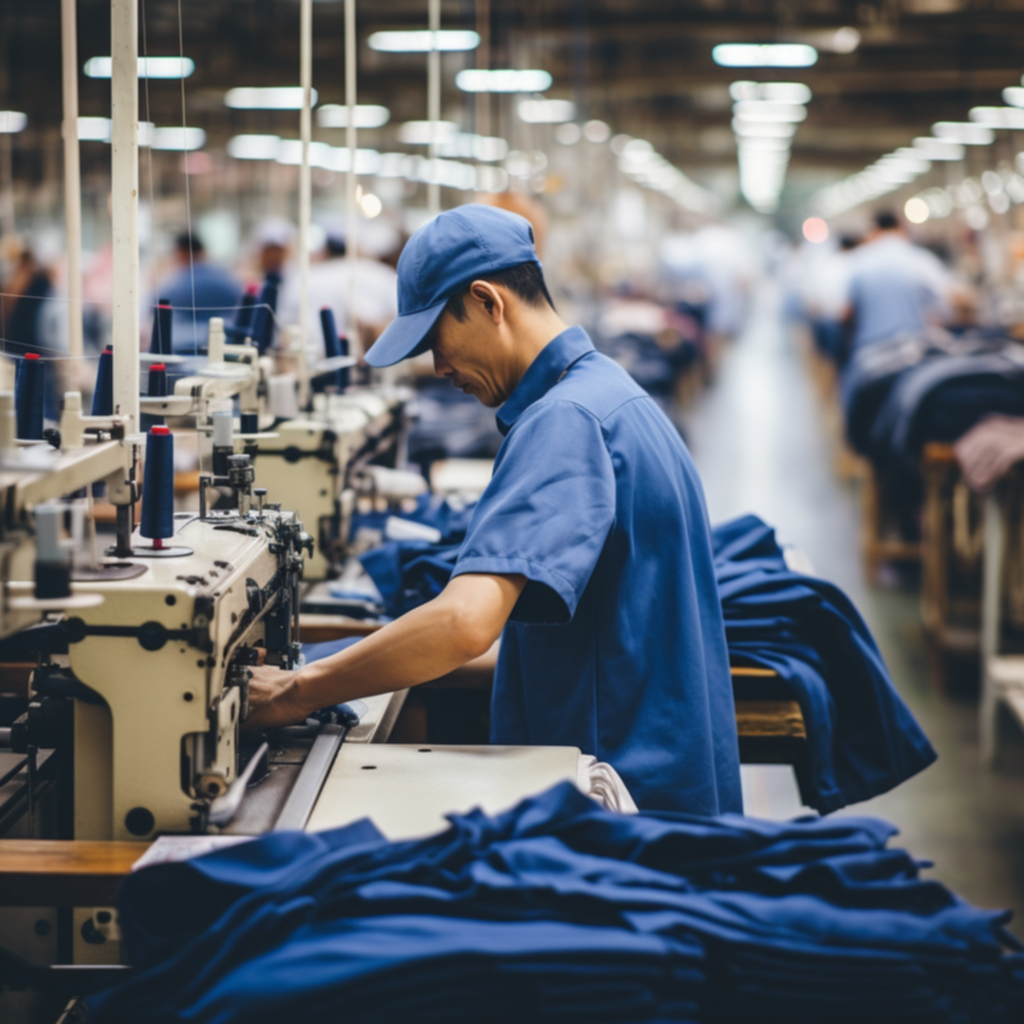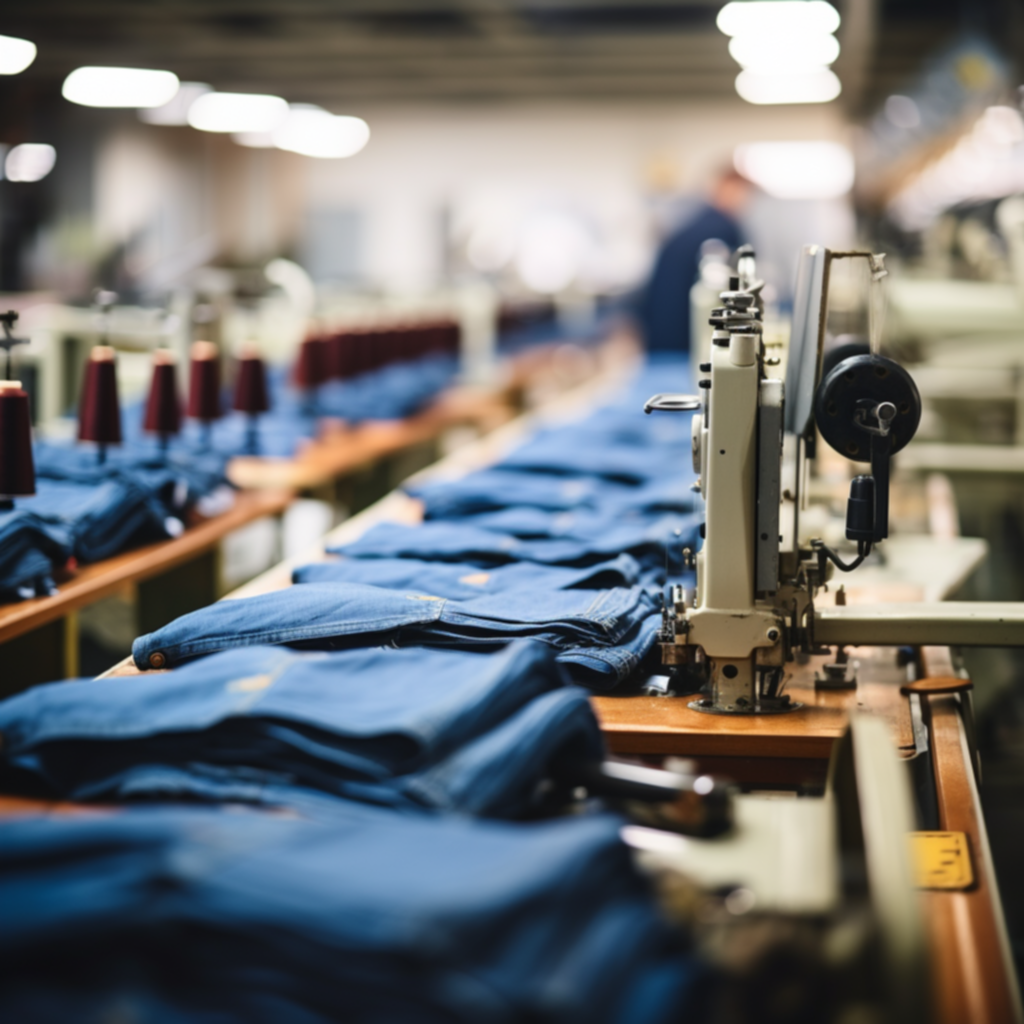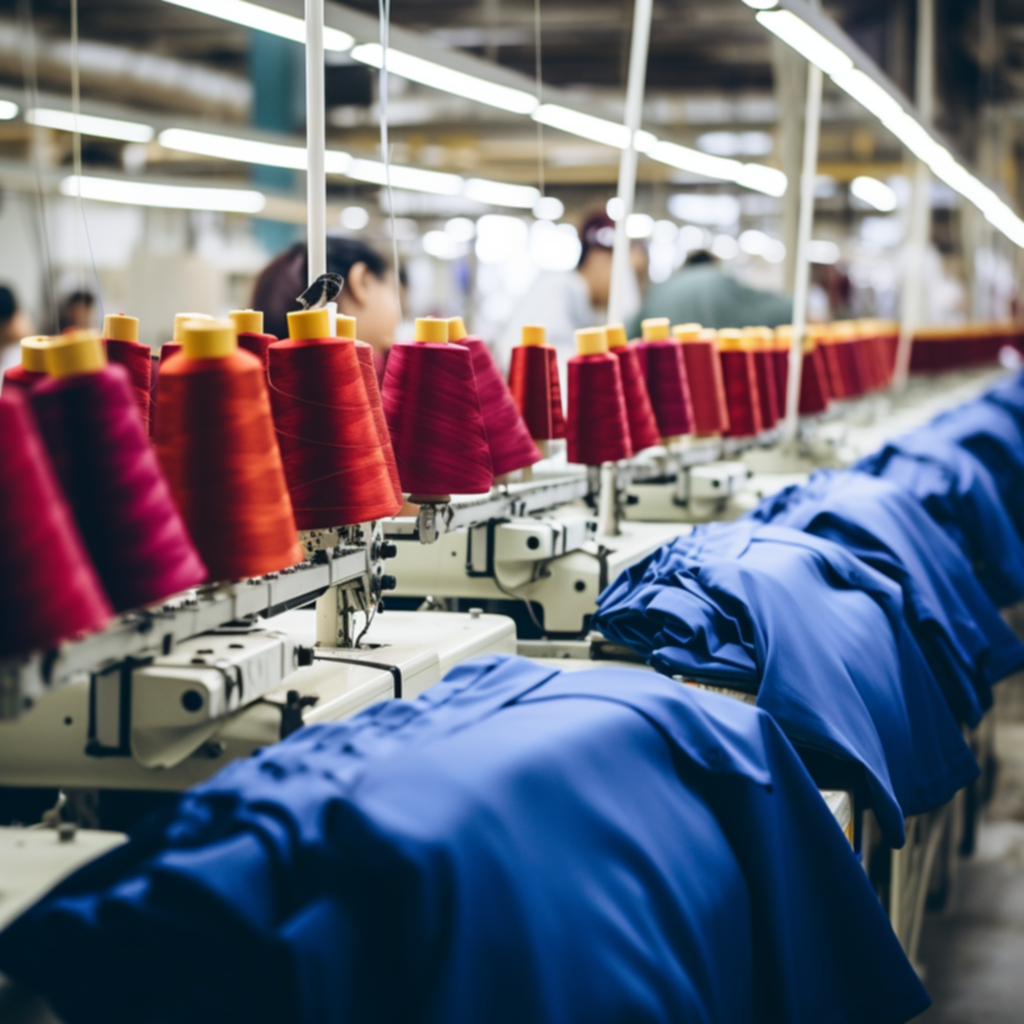Master the Art of Buying Clothes from Manufacturers


In the world of fashion and retail, the prospect of buying clothes directly from manufacturers can be both exciting and daunting. The journey involves more than just picking out your preferred styles and waiting for the delivery. It requires understanding the industry landscape, identifying the right manufacturers, setting clear objectives, negotiating terms, ensuring quality, and coordinating logistics. This article aims to guide aspiring retailers, boutique owners, or fashion entrepreneurs through this intricate process, helping them make informed decisions and avoid common pitfalls.
To start, it's important to understand why one should consider buying clothes from manufacturers. This leads us to an exploration of the types of manufacturers available, each with its own advantages and disadvantages. Understanding these aspects lays a strong foundation for anyone planning to buy clothes from manufacturers, setting the stage for a successful venture.
2. Understanding the Basics
Before embarking on the process of buying clothes from manufacturers, it is vital to grasp the basics of the fashion industry and the various parties involved in the production of garments.
2.1 Different Types of Clothing Manufacturers
The manufacturing segment of the fashion industry is diverse, each catering to different needs and offering unique benefits. Let's delve into the various types of clothing manufacturers:
Fully Factories - These are manufacturing facilities that handle every step of the production process, from procuring the raw materials to producing the final product. They can make garments entirely based on your designs and specifications, offering a one-stop solution for your production needs. However, they typically require high minimum order quantities (MOQs) and may not be suitable for small businesses or startups.
Cut and Sew Manufacturers - These manufacturers specialize in assembling pieces of fabric into finished garments. However, unlike full-package factories, they require you to provide them with the design patterns, fabrics, and other necessary components for production. This gives you more control over the materials used but also requires more management on your part.
Private Label Manufacturers - These manufacturers produce clothing under your brand name, but they typically offer a range of pre-designed, ready-to-wear garments from which you can choose. This method is ideal for businesses that want to launch their clothing line quickly and without the hassle of design and pattern making.
CMT (Cut, Make, and Trim) Manufacturers - CMT manufacturers offer a more specialized service. You provide them with the materials, designs, and components, and they assemble the clothing for you. This process allows you to maintain complete control over your garments but also requires a significant amount of work, as you need to source all the materials yourself.
2.2 Why Buy from a Manufacturer?
With various types of clothing manufacturers in the market, you might wonder, why buy directly from a manufacturer? There are several reasons:
Quality Control - Buying directly from a manufacturer gives you control over the design, quality, and materials used in your clothing line. You get to oversee the entire production process, ensuring the garments meet your quality standards.
Profit Margin - By cutting out middlemen like wholesalers or distributors, you can achieve a greater profit margin per item sold. Buying directly from a manufacturer often allows you to get the best price per unit, especially when you order in bulk.
Transparency - When you work directly with a manufacturer, you have a clear view of the production process. This transparency allows you to guarantee ethical sourcing and production to your customers, which can be a significant selling point in today's socially conscious market.
3. Setting Your Objectives
Now that you've understood the different types of manufacturers and why buying directly from manufacturers can benefit your business, it's time to set your objectives. These objectives should clearly define your goals and establish parameters for your business operations.
3.1 Determining Your Niche
Identifying your niche is a crucial first step in setting your objectives. The clothing industry is a vast market with countless niches, from high-fashion couture to casual streetwear and everything in between.
Understanding your niche will allow you to target specific consumer groups and design products that cater to their needs and preferences. This might mean focusing on eco-friendly clothing, plus-size fashion, or high-performance sportswear, among other things.
To determine your niche, consider factors such as market demand, competition, and your passion and expertise. Conducting a thorough market research will give you valuable insights into current fashion trends, consumer buying behavior, and gaps in the market that your clothing line could fill.
3.2 Understanding Your Budget
After identifying your niche, it's crucial to understand your budget. Buying clothes from manufacturers requires a significant financial investment, so you must be clear on how much you are willing and able to spend.
Start by estimating all potential costs. This includes not only the per-unit cost of the clothes but also additional costs like shipping, customs duties, taxes, and storage. Also, consider unexpected costs like product returns or additional quality assurance measures.
When calculating your budget, keep in mind that the final retail price of your clothes must cover all these costs while still providing a reasonable profit margin. Pricing your products correctly is essential for the sustainability and growth of your business.
With a clear understanding of your niche and budget, you are well-prepared to start looking for suitable manufacturers and begin the buying process. Remember, these objectives will guide your decisions throughout this journey, so take the time to define them carefully.

4. Steps to Buying Clothes from Manufacturers
After setting your objectives, you're ready to embark on the process of buying clothes from manufacturers. This journey comprises several key steps, from research and communication to negotiation and finalizing your order.
4.1 Research and Finding the Right Manufacturer
Finding the right manufacturer is perhaps the most critical step in this process. Start by identifying manufacturers that specialize in your niche. For instance, if you're launching a sustainable clothing line, look for manufacturers that prioritize eco-friendly materials and practices.
You can use various resources to find suitable manufacturers, including online directories, trade shows, and industry contacts. Online platforms like Alibaba and Global Sources can be especially useful for finding overseas manufacturers.
When creating your shortlist, don't forget to check the reputation of each potential manufacturer. Look for reviews or testimonials from other businesses they've worked with. An unbiased perspective can give you valuable insights into the manufacturer's quality of work, reliability, and customer service.
4.2 Contacting Manufacturers and Building Relationships
Once you've shortlisted a few potential manufacturers, it's time to reach out to them. Prepare a clear and concise introduction of your business and what you're looking to produce. This initial contact can be through email, phone, or even a face-to-face meeting, depending on what is most feasible.
Remember, building a strong relationship with your manufacturer is crucial. A good manufacturer is not just a supplier but a partner who can contribute to the success of your business. Establishing open and regular communication from the start can set the foundation for a successful long-term partnership.
4.3 Negotiating Terms and Prices
Negotiation is a vital part of buying clothes from manufacturers. This step involves discussing and agreeing on the terms of your collaboration, including prices, payment terms, minimum order quantities (MOQs), and lead times.
Make sure to clarify all costs involved, such as the price per unit, setup fees, sample costs, and any additional charges. Also, discuss the production timeline, including the time needed for sampling and bulk production.
Remember, negotiation is a two-way street. While you want to get the best terms for your business, the manufacturer also needs to cover their costs and make a profit. A fair negotiation will lead to a win-win agreement that benefits both parties.
4.4 Placing Your Order
After negotiating the terms and checking the quality of the manufacturer's samples, you're ready to place your order. Make sure to confirm all details in writing, including the product specifications, production timeline, payment terms, and delivery method.
It's advisable to start with a small order, especially if you're working with a new manufacturer. This allows you to check the quality of the bulk production and the manufacturer's ability to meet deadlines without risking a large investment.
5. Choosing Domestic vs. Overseas Manufacturers
When looking to buy clothes from manufacturers, one of the most crucial decisions you'll face is whether to source domestically or overseas. Both options have their advantages and potential drawbacks. Understanding these can help you make an informed decision that best aligns with your business objectives and values.
5.1 Benefits and Drawbacks of Domestic Manufacturers
Benefits of Domestic Manufacturers:
Easier Communication: With manufacturers in your own country, you share a language, time zone, and business culture, which can simplify communication and collaboration.
Higher Quality Control: Domestic manufacturers often have high manufacturing standards. Close proximity also allows you to visit the production site to oversee the process and ensure quality control.
Faster Shipping: With shorter distances involved, shipping times are generally quicker, allowing you to bring products to market faster.
Patriotic Appeal: Customers often appreciate locally-made products, which can support local economies and be perceived as more sustainable due to reduced shipping distances.
Drawbacks of Domestic Manufacturers:
Higher Costs: Production costs in developed countries can be higher due to factors like wage levels, operating costs, and regulatory compliance. These higher costs are usually passed on to the buyer.
Limited Capacity or Specialty: Depending on your niche, you might find that domestic manufacturers lack the capacity or specialty skills to produce your clothing line at scale.
5.2 Benefits and Drawbacks of Overseas Manufacturers
Benefits of Overseas Manufacturers:
- Lower Costs: Countries with emerging economies often have lower labor costs, which can significantly reduce production costs and increase your profit margin.
- High Capacity and Expertise: Countries like China, Bangladesh, and India have robust textile and garment industries with vast manufacturing capacity and specialized expertise.
- Variety of Choices: With manufacturers around the globe, you have a wider selection of potential partners who can cater to diverse styles and production techniques.
Drawbacks of Overseas Manufacturers:
- Communication Challenges: Language barriers, time zone differences, and cultural nuances can complicate communication.
- Longer Lead Times: Overseas shipping can take longer, which could slow down your product turnover and responsiveness to market trends.
- Import Regulations and Duties: Importing goods can involve complex regulations and duties, adding to costs and administrative tasks.
6. Dealing with Minimum Order Quantities (MOQs)
A major consideration in the buying process is the manufacturer's Minimum Order Quantities (MOQs). MOQs represent the lowest quantity of a certain product a supplier is willing to sell. Let's delve into understanding, negotiating, and managing MOQs.

6.1 Understanding MOQs
MOQs are set by manufacturers to ensure that their production costs are covered. For the clothing industry, these quantities are usually set per style or color, not per total garments. This means you might need to order a certain minimum number of each clothing style or color in your line.
Understanding MOQs is vital because it impacts your cost per unit, your total initial investment, and, consequently, your pricing and profit margins. Generally, higher MOQs translate to lower per-unit costs due to economies of scale, while lower MOQs may mean higher per-unit costs.
6.2 Negotiating MOQs
It's important to remember that MOQs are often negotiable. If a manufacturer's MOQ is too high for your business, open a dialogue with them. Some manufacturers may agree to lower their MOQ for your first order, anticipating that you will place larger orders in the future as your business grows.
You could also negotiate a higher per-unit cost in exchange for a lower MOQ. The key to effective negotiation is mutual benefit and respect. Be transparent about your needs and capacity, but also understand and respect the manufacturer's business requirements.
6.3 Strategies for Handling High MOQs
If you find the manufacturer's MOQ still too high after negotiation, there are other strategies to manage the situation:
Pooling Orders: Collaborate with other small businesses to pool your orders and meet the MOQ.
Versatile Design: Design your line in a way that uses the same fabric or color across multiple styles. This allows you to order more of the same material or color, effectively meeting the MOQ while offering a variety of products.
Small Batch Manufacturers: Look for manufacturers that specialize in small batch production. These manufacturers generally have lower MOQs and are more accommodating to small businesses or startups. Be aware, however, that the per-unit cost might be higher.
7. Ensuring Quality Control
Maintaining high standards of quality is non-negotiable when sourcing clothes from manufacturers. This process involves inspecting your goods at different stages of production to ensure they meet your established standards.
7.1 The Importance of Quality Control
Quality control is a vital practice for three main reasons. First, it ensures that your products align with your specifications and meet the quality you promised your customers. Checking things like fabric quality, stitching, sizing, and other particulars is integral to this process.
Secondly, effective quality control helps to detect any defects or production issues early. Catching these problems before the final shipment allows you to rectify them, saving you from the cost and trouble of dealing with faulty products later.
Lastly, maintaining a robust quality control system can significantly enhance customer satisfaction. By delivering high-quality products consistently, you earn your customers' trust, leading to repeat purchases and positive word-of-mouth.
7.2 Implementing Quality Control
Initiating a successful quality control process involves several steps:
Defining Quality Standards: Be explicit about what quality means for your brand. What kind of materials, stitching, finishes, and sizes are acceptable? Communicate these standards to your manufacturer using detailed product specifications, samples, or quality checklists.
Inspection During Production: Arrange for inspections at different stages of production, from initial material purchase to pre-shipment. Some manufacturers offer in-house quality control services, but you can also engage an independent quality inspection service for unbiased results.
Final Quality Check: Conduct a comprehensive quality check once the production is complete but before the goods are shipped. This is your last opportunity to catch any lingering issues.
8. Managing Logistics and Shipment
After ensuring your products meet your standards through rigorous quality control, the next crucial step is managing logistics and shipment. These processes involve planning, implementing, and controlling the efficient, effective flow and storage of your goods.
8.1 Understanding Shipping Terms
When dealing with manufacturers, especially overseas ones, it's essential to understand shipping terms or Incoterms (International Commercial Terms). These universally recognized terms define the responsibilities of buyers and sellers for the delivery of goods.
Commonly used terms include:
FOB (Free On Board): The seller is responsible for the goods until they're loaded on the ship at the port of origin. After that, responsibility shifts to the buyer.
CIF (Cost, Insurance, and Freight): The seller handles the cost, insurance, and freight to bring the goods to the port of destination. However, the risk transfers to the buyer once the goods are on the ship at the port of origin.
EXW (Ex Works): The buyer assumes all responsibilities and costs from the seller's factory or warehouse, including transportation and insurance.
Understanding these terms helps you evaluate the total cost and responsibilities involved in shipping your goods, allowing for a smoother transaction and fewer surprises.
8.2 Organizing Shipping
Organizing shipping involves several steps:
Select a Freight Forwarder: Freight forwarders are companies that arrange importing and exporting of goods. They can take care of documentation, regulations, and customs clearance, making the shipping process smoother. When choosing a freight forwarder, consider factors like their industry experience, services offered, network, and customer service.
Track Your Shipment: Use the tracking number provided by your freight forwarder to monitor your shipment's progress and estimated delivery date.
Prepare for Delays: Regardless of how well you plan, there can always be unforeseen delays in shipping, such as weather disturbances or customs holdups. Plan for such scenarios and have contingency plans in place.
8.3 Handling Customs
Customs can be a significant challenge, especially for newcomers. It involves paperwork and potentially paying customs duties and import taxes. In most countries, the Harmonized System (HS) code, a standardized numerical method of classifying traded products, is used to determine these costs. Ensure that you're familiar with the HS code for your goods.
Freight forwarders can handle most of the customs process, but as the importer of record, you're legally responsible for all customs declarations. So, make sure you understand your obligations.

9. Building Relationships with Manufacturers
Fostering a strong, mutually beneficial relationship with your chosen manufacturer is a crucial part of your business journey. This relationship is not merely transactional; it's a partnership that can significantly influence your business's success.
9.1 Why Building Relationships is Important
Strong relationships with manufacturers can bring several benefits:
Better Negotiation: A manufacturer that knows you and values your business relationship is more likely to offer you better terms during negotiations.
Prioritization: Manufacturers often prioritize clients they have a good relationship with when it comes to order fulfillment, especially during busy periods.
Troubleshooting Support: If issues arise, a good relationship can facilitate quicker problem-solving and troubleshooting.
Potential for Exclusive Deals: Manufacturers may offer exclusive deals or first refusal rights on new products to clients they have a strong relationship with.
9.2 Strategies for Building Strong Relationships
Building a strong relationship with your manufacturer involves:
Clear Communication: Communicate your needs, concerns, and expectations clearly and promptly. Misunderstandings can lead to issues down the line.
Mutual Respect: Respect the manufacturer's time, business needs, and expertise. Pay on time and respect the terms of your agreement.
Consistent Orders: Consistent, reliable business is a great way to build trust. If you're a regular client who orders consistently, the manufacturer is more likely to value your relationship.
Personal Interaction: Building a personal rapport can strengthen your business relationship. This could involve visiting the manufacturing site or taking your contact at the manufacturer out for a meal or coffee when possible.
Building relationships takes time and effort, but the rewards for your business can be significant.
Frequently Asked Questions (FAQs)
How can I find reputable clothing manufacturers?
Start by attending trade shows and using online platforms like Alibaba or ThomasNet. Always verify the manufacturer's credibility through references, reviews, and sample products.
Should I source domestically or overseas?
This decision depends on various factors including your budget, quality standards, lead time, and business values. Both have their own benefits and drawbacks, so it's best to weigh your options carefully.
What are MOQs and how can I negotiate them?
MOQs, or Minimum Order Quantities, represent the least amount of a specific product a supplier is willing to sell. If the MOQ is too high, you can negotiate a lower quantity or higher per-unit cost with the manufacturer.
How can I ensure quality control when buying clothes from manufacturers?
Define your quality standards clearly and arrange for inspections at different stages of production. Consider using an independent quality inspection service for unbiased results.
What shipping terms should I know?
Familiarize yourself with Incoterms such as FOB (Free On Board), CIF (Cost, Insurance, and Freight), and EXW (Ex Works) to understand the responsibilities and costs involved in shipping.
How can I build a good relationship with manufacturers?
Clear communication, mutual respect, consistent orders, and personal interaction can help foster a strong, mutually beneficial relationship with your manufacturer.





-500x500.jpg)
-500x500.jpg)
-500x500.jpg)
-500x500.jpg)
-500x500.jpg)